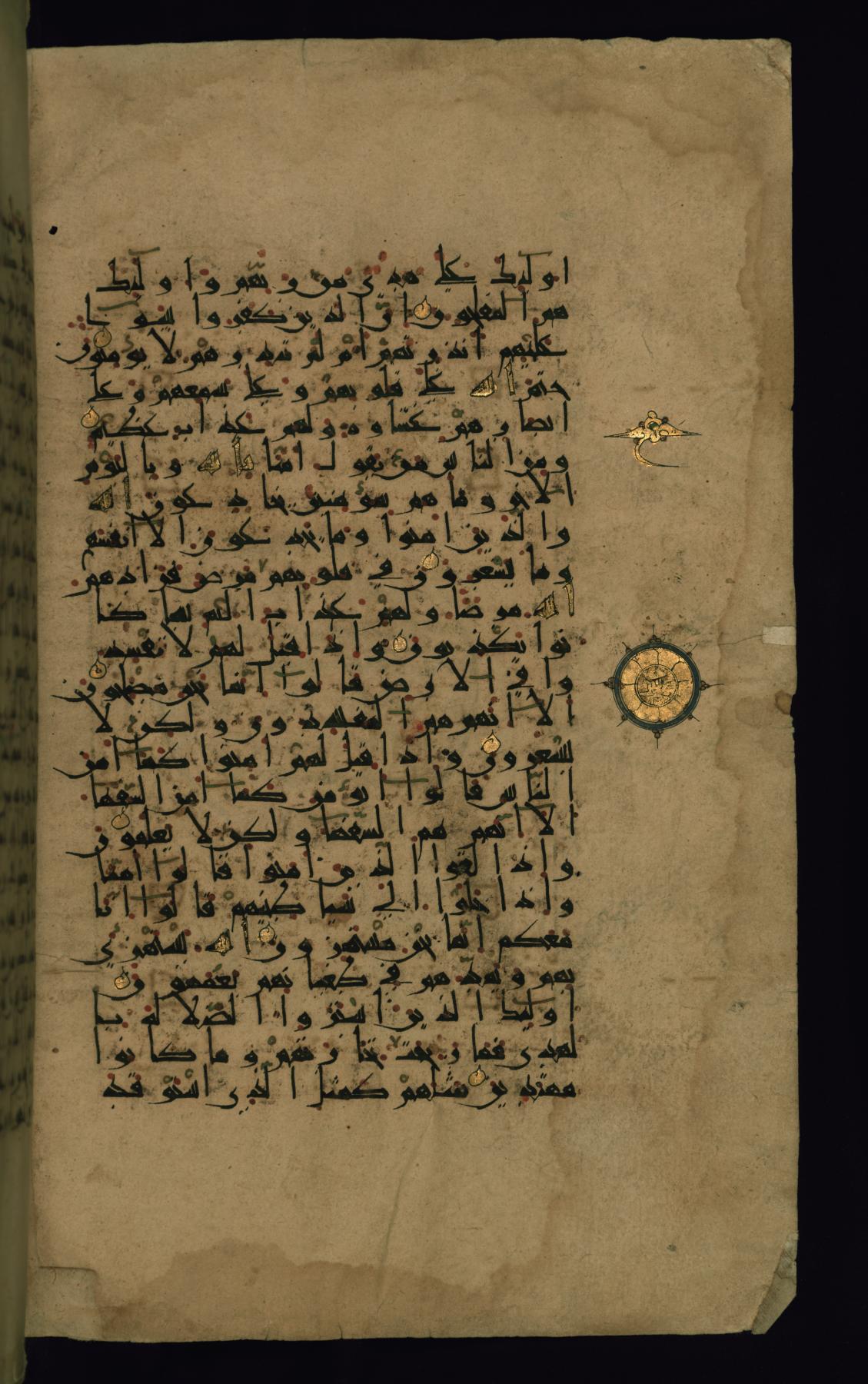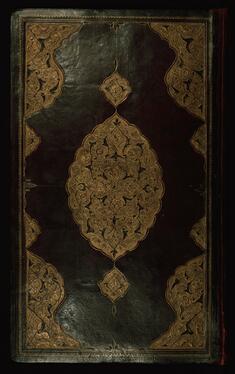Text Page with Qur'anic Text Written in New Abbasid (Broken Cursive) Style
(Manuscripts and Rare Books, Islamic World , Islamic Manuscripts)
On this text page from Walters manuscript W.557, verses from the Qur'an are written in the New Abbasid (Broken Cursive) style in dark brown ink with red dots for vowels and orthoepic signs, such as tashdid and sukun, in green. The name of Allah is illuminated in gold, as it is throughout the manuscript.
Provenance
Provenance (from the French provenir, 'to come from/forth') is the chronology of the ownership, custody, or location of a historical object. Learn more about provenance at the Walters.
Sultan 'Uthman Khan ibn Mustafá Khan (reigned 1168 AH/AD 1754-1171 AH/AD 1757) [date and mode of acquisition unknown] [Erased seal of Sultan 'Uthman Khan ibn Mustafá Khan and a waqf inscription by Ibrahim Hanif and his seal (fol. 1a)]; Henry Walters, Baltimore, 1897 [mode of acquisition unknown] [Inscription in pencil: H(enry) W(alters) May 1897 direct from Constantinople (front flyleaf ia)]; Walters Art Museum, 1931, by bequest.
Geographies
Iran (Place of Origin)
Measurements
H: 13 9/16 x W: 8 1/16 in. (34.5 x 20.5 cm)
Credit Line
Acquired by Henry Walters, 1897
Location in Museum
Not on view
Accession Number
In libraries, galleries, museums, and archives, an accession number is a unique identifier assigned to each object in the collection.
In libraries, galleries, museums, and archives, an accession number is a unique identifier assigned to each object in the collection.
W.557.3B



